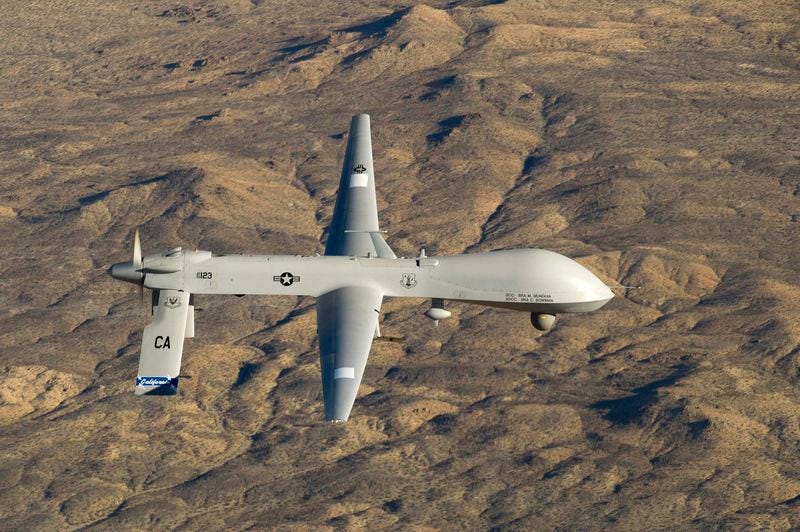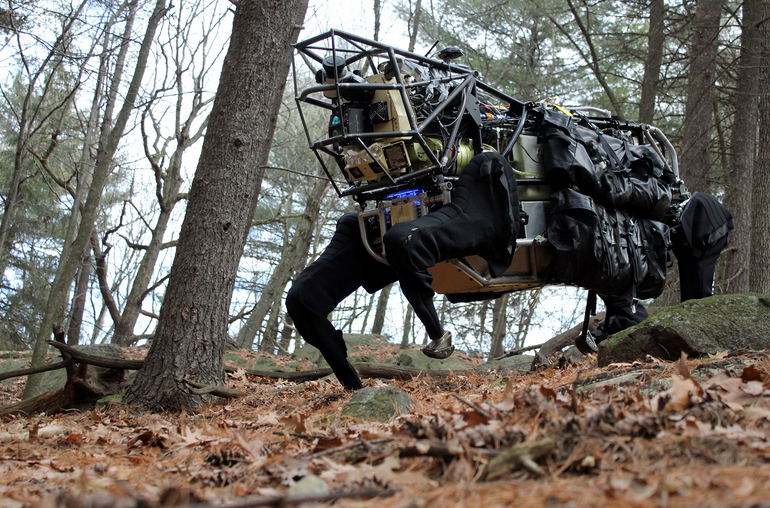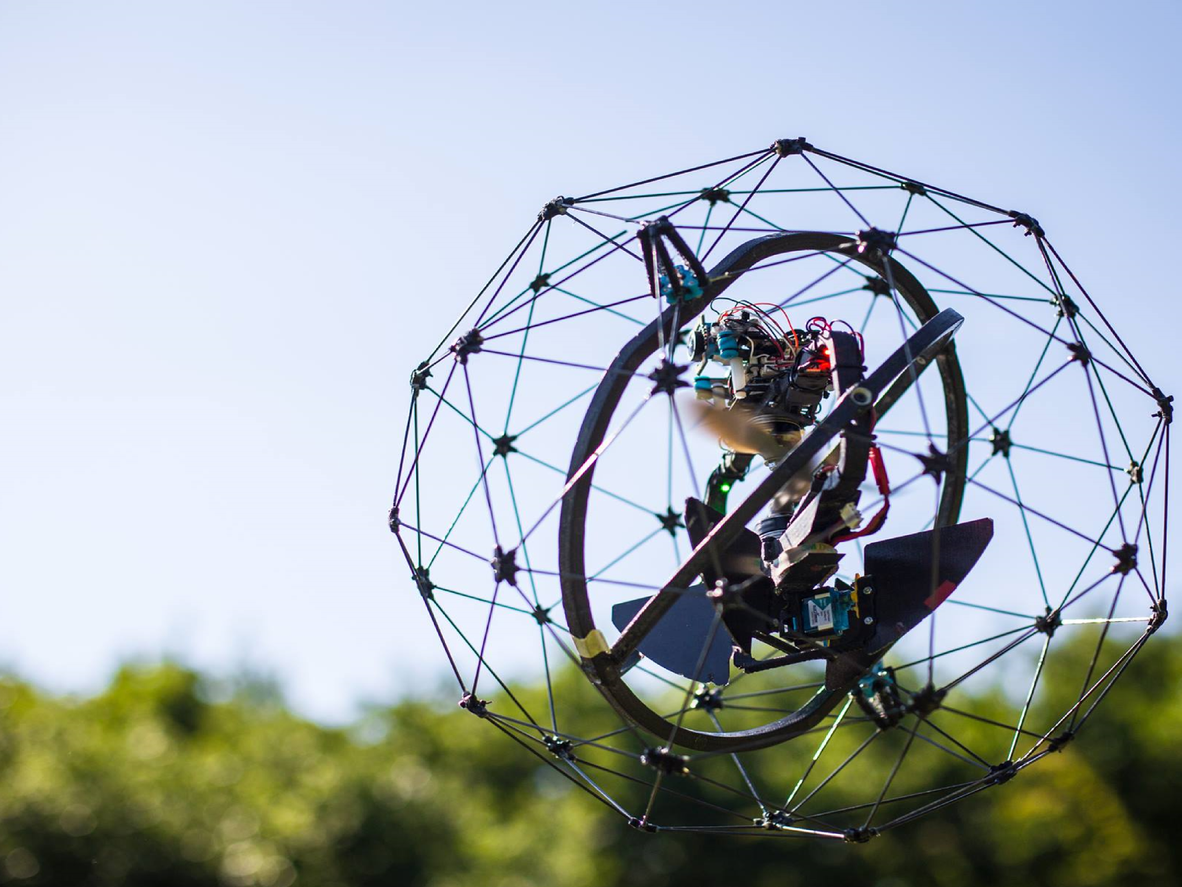onebyone
SENIOR MEMBER

- Joined
- Jul 2, 2014
- Messages
- 7,550
- Reaction score
- -6
- Country
- Location
Little noticed amid the daily news bulletins about the Islamic State and Syria, the Pentagon has begun a push for exotic new weapons that can deter Russia and China.
Pentagon officials have started talking openly about using the latest tools of artificial intelligence and machine learning to create robot weapons, "human-machine teams" and enhanced, super-powered soldiers.
It may sound like science fiction, but Pentagon officials say they have concluded that such high-tech systems are the best way to combat rapid improvements by the Russian and Chinese militaries.
These potentially revolutionary U.S. weapons systems were explained in an interview last week by Robert Work, the deputy secretary of defense, and Air Force Gen. Paul Selva, the vice chairman of the Joint Chiefs of Staff. Their comments were the latest in a series of unusual recent disclosures about what, until a few months ago, was some of the military's most secret research.
"This is how we will make our battle networks more powerful, hopefully, and inject enough uncertainty in the minds of the Russians and the Chinese that, you know, if they ever did come to blows with us, would be able to prevail in a conventional [non-nuclear] way. That, for me, is the definition of conventional deterrence," Work explained.
 Thomson ReutersA U.S. Air Force MQ-1 Predator unmanned aerial vehicle flies near the Southern California Logistics Airport in Victorville, California in USAF handout photograph
Thomson ReutersA U.S. Air Force MQ-1 Predator unmanned aerial vehicle flies near the Southern California Logistics Airport in Victorville, California in USAF handout photograph
Within the Pentagon, this high-tech approach is known by the dull phrase "third offset strategy," emulating two earlier "offsets" that checked Russian military advances during the Cold War. The first offset was tactical nuclear weapons; the second was precision-guided conventional weapons. The latest version assumes that smart, robot weapons can help restore deterrence that has been eroded by Russian and Chinese progress.
Gen. Joseph F. Dunford, the chairman of the Joint Chiefs of Staff, voiced an early warning during his confirmation hearing in July when he said that Russia posed the greatest "existential" threat to the United States. Work said in a recent speech that because the United States has focused on the Middle East since 2001, "our program has been slow to adapt as these high-end threats have started to re-emerge."
The Pentagon's 2017 budget includes some money to prime the high-tech pump: $3 billion for advanced weapons to counter, say, a Chinese long-range attack on U.S. naval forces; $3 billion to upgrade undersea systems; $3 billion for human-machine teaming and "swarming" operations by unmanned drones; $1.7 billion for cyber and electronic systems that use artificial intelligence; and $500 million for war-gaming and other testing of the new concepts.
The Obama administration, sometimes chided for being slow to respond to Russian and Chinese threats, seems to have concluded that America's best strategy is to leverage its biggest advantage, which is technology. The concepts are reminiscent of President Reagan's "Star Wars" initiative, but 30 years on.
 Boston DynamicsA robot developed by Boston Dynamics.
Boston DynamicsA robot developed by Boston Dynamics.
The high-tech resurgence got a boost last year from the blue-ribbon Defense Science Board, which conducted a "summer study" of autonomous, robot weapons. "Imagine if we are unprepared to counter such capabilities in the hands of our adversaries," the board warned.
The game partly is about messaging the Russians and Chinese. Work has described Russia as "a resurgent great power" and China as "a rising power with impressive latent technological capabilities [that] probably embodies a more enduring strategic challenge." In a Feb. 2 budget announcement, Defense Secretary Ashton Carter spoke of Russian "aggression" in Europe and said: "We haven't had to worry about this for 25 years, and while I wish it were otherwise, now we do."
 Business InsiderA "collision-proof" drone.
Business InsiderA "collision-proof" drone.
Carter raised some eyebrows in that budget message when he described the Pentagon's "Strategic Capabilities Office," a highly classified initiative that he began in 2012 when he was undersecretary. He noted that the office was working on advanced navigation for smart weapons using micro-cameras and sensors; missile-defense systems using hypervelocity projectiles; and swarming drones that are "really fast, really resistant."
Work illustrated the new willingness to discuss exotic weaponry. During the interview, he showed off a small "Perdix" micro-drone, less than a foot long, which flew with 25 of its mates in a tight grid last summer after being launched from a large plane. These organized drones are part of the Pentagon's vision of future combat.
The Ukraine and Syria battlefields have offered sobering demonstrations of Russian capabilities. In the interview and other public comments, Work catalogued Russian military advances that include automated battle networks, advanced sensors, drones, anti-personnel weapons and jamming devices.
"Our adversaries, quite frankly, are pursuing enhanced human operations," Work warned a gathering at the Center for a New American Security in December. "And it scares the crap out of us, really."
Read the original article on The Washington Post. Copyright 2016. Follow The Washington Post on Twitter.
NOW WATCH: The US Navy has launched its new 387-foot combat warship
Exotic new weapons the Pentagon wants to deter Russia and China - Business Insider
Pentagon officials have started talking openly about using the latest tools of artificial intelligence and machine learning to create robot weapons, "human-machine teams" and enhanced, super-powered soldiers.
It may sound like science fiction, but Pentagon officials say they have concluded that such high-tech systems are the best way to combat rapid improvements by the Russian and Chinese militaries.
These potentially revolutionary U.S. weapons systems were explained in an interview last week by Robert Work, the deputy secretary of defense, and Air Force Gen. Paul Selva, the vice chairman of the Joint Chiefs of Staff. Their comments were the latest in a series of unusual recent disclosures about what, until a few months ago, was some of the military's most secret research.
"This is how we will make our battle networks more powerful, hopefully, and inject enough uncertainty in the minds of the Russians and the Chinese that, you know, if they ever did come to blows with us, would be able to prevail in a conventional [non-nuclear] way. That, for me, is the definition of conventional deterrence," Work explained.

Within the Pentagon, this high-tech approach is known by the dull phrase "third offset strategy," emulating two earlier "offsets" that checked Russian military advances during the Cold War. The first offset was tactical nuclear weapons; the second was precision-guided conventional weapons. The latest version assumes that smart, robot weapons can help restore deterrence that has been eroded by Russian and Chinese progress.
Gen. Joseph F. Dunford, the chairman of the Joint Chiefs of Staff, voiced an early warning during his confirmation hearing in July when he said that Russia posed the greatest "existential" threat to the United States. Work said in a recent speech that because the United States has focused on the Middle East since 2001, "our program has been slow to adapt as these high-end threats have started to re-emerge."
The Pentagon's 2017 budget includes some money to prime the high-tech pump: $3 billion for advanced weapons to counter, say, a Chinese long-range attack on U.S. naval forces; $3 billion to upgrade undersea systems; $3 billion for human-machine teaming and "swarming" operations by unmanned drones; $1.7 billion for cyber and electronic systems that use artificial intelligence; and $500 million for war-gaming and other testing of the new concepts.
The Obama administration, sometimes chided for being slow to respond to Russian and Chinese threats, seems to have concluded that America's best strategy is to leverage its biggest advantage, which is technology. The concepts are reminiscent of President Reagan's "Star Wars" initiative, but 30 years on.

The high-tech resurgence got a boost last year from the blue-ribbon Defense Science Board, which conducted a "summer study" of autonomous, robot weapons. "Imagine if we are unprepared to counter such capabilities in the hands of our adversaries," the board warned.
The game partly is about messaging the Russians and Chinese. Work has described Russia as "a resurgent great power" and China as "a rising power with impressive latent technological capabilities [that] probably embodies a more enduring strategic challenge." In a Feb. 2 budget announcement, Defense Secretary Ashton Carter spoke of Russian "aggression" in Europe and said: "We haven't had to worry about this for 25 years, and while I wish it were otherwise, now we do."

Carter raised some eyebrows in that budget message when he described the Pentagon's "Strategic Capabilities Office," a highly classified initiative that he began in 2012 when he was undersecretary. He noted that the office was working on advanced navigation for smart weapons using micro-cameras and sensors; missile-defense systems using hypervelocity projectiles; and swarming drones that are "really fast, really resistant."
Work illustrated the new willingness to discuss exotic weaponry. During the interview, he showed off a small "Perdix" micro-drone, less than a foot long, which flew with 25 of its mates in a tight grid last summer after being launched from a large plane. These organized drones are part of the Pentagon's vision of future combat.
The Ukraine and Syria battlefields have offered sobering demonstrations of Russian capabilities. In the interview and other public comments, Work catalogued Russian military advances that include automated battle networks, advanced sensors, drones, anti-personnel weapons and jamming devices.
"Our adversaries, quite frankly, are pursuing enhanced human operations," Work warned a gathering at the Center for a New American Security in December. "And it scares the crap out of us, really."
Read the original article on The Washington Post. Copyright 2016. Follow The Washington Post on Twitter.
NOW WATCH: The US Navy has launched its new 387-foot combat warship
Exotic new weapons the Pentagon wants to deter Russia and China - Business Insider
